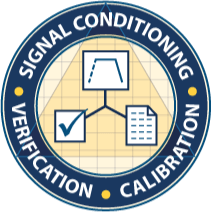28000 Voltage Filter/Amplifier Overview
Precision 28000 Solutions for Amplifying Low-Level Voltage Input Signals
Measurements
- Anti-Aliasing Filters with Programmable Amplifiers
- General Purpose Voltage Amplifier for Dynamic Measurements
- Low-Drift DC Amplifier for Low-Level DC Signals
- Underwater Acoustics
- Pyroshock Measurements
- Wind Tunnels
8-Channel 200 kHz Filter/Amplifiers
The 28608B and 28618 Octal Programmable Filter/Amplifier cards are ideal for conditioning low-level voltage inputs in front of high-resolution digital data acquisition systems. The cards feature balanced differential inputs and distributed programmable gain with fine resolution for engineering units scaling. Filter cutoff and characteristics are programmable to match the requirements of the particular measurement. Choose FLAT mode for optimal frequency domain performance or PULSE mode for critical time domain measurements. The filters may be bypassed under program control for wideband measurements.
2-Channel 3 MHz Filter/Amplifier
The 28612 Dual-Channel 3 MHz Programmable Filter/Amplifier provides two channels of low noise amplification and 6 pole low-pass filters with programmable cutoff frequencies from 5 kHz to 3.15 MHz. The 28612 input stage can be programmed to receive single ended or differential signals and the input may be programmed for Hi-Z or 50-ohm termination. The Dual mode “FLAT/PULSE” filter has programmable characteristics that may be optimized for either time or frequency domain measurements.
Innovative Performance Technologies
Balanced Differential Input Topology
The 28608B and the 28618 input stage is a high impedance balanced differential input topology that may be used to receive differential signals from a bridge type transducer or to condition grounded (single-ended) voltage sources without introducing ground loops...
Read MoreRead Less
The 28608B and the 28618 input stage is a high impedance balanced differential input topology that may be used to receive differential signals from a bridge type transducer or to condition grounded (single-ended) voltage sources without introducing ground loops. The input is versatile in that it has low DC drift for DC measurement applications, low noise for wideband AC measurements and is equipped with programmable AC/DC coupling. AC coupling is useful for eliminating large DC bias on the signal so that more channel gain can be applied in order to emphasize small AC fluctuations in the signal.
Measuring Resonant Transducers
Some transducers such as piezo-resistive pressure transducers can have very high resonant frequencies that can be excited by transient events and this out-band signal can be larger than the signal of interest. Sources of unwanted low frequency noise can exist such as engine sub-harmonics, triboelectric noise from cable whip or pyro-electric noise from the sensor caused by the large temperature gradients...
Read MoreRead Less
Some transducers such as piezo-resistive pressure transducers can have very high resonant frequencies that can be excited by transient events and this out-band signal can be larger than the signal of interest. Sources of unwanted low frequency noise can exist such as engine sub-harmonics, triboelectric noise from cable whip or pyro-electric noise from the sensor caused by the large temperature gradients.
The 28000 amplifier gain is distributed as “pre-filter” and “post-filter” gain to allow the filter to remove out-band signals such as transducer resonance while still achieving the required full-scale in-band signal level. Using the 28000 “reserve” feature, the user can specify the required protection against out-band noise and the pre- and post-filter gain are automatically distributed to provide this protection. The pre-filter gain is set to achieve the required amplifier headroom for the out-band signals prior to the filter while maximizing dynamic range. After the filter removes the out-band signals, the post-filter gain is set to achieve the desired full-scale output.
Frequency or Time Domain Measurements
The Precision Filters’ FLAT/PULSE filter technology allows the user to set the frequency response characteristics of the signal conditioner under program control. For transient tests or tests where time-domain wave shape preservation is important, program the filter characteristic to PULSE mode. The PULSE mode provides linear phase response...
Read MoreRead Less
The Precision Filters’ FLAT/PULSE filter technology allows the user to set the frequency response characteristics of the signal conditioner under program control. For transient tests or tests where time-domain wave shape preservation is important, program the filter characteristic to PULSE mode. The PULSE mode provides linear phase response, which is required for time-domain wave shape reproduction and outstanding transient response with low overshoot and ringing. For frequency domain analysis, selecting the FLAT filter characteristic will result in outstanding transfer function flatness and a sharp, selective filter response. FLAT/PULSE filter technology is available on all Precision Filters’ Voltage Filter/Amplifier Products.
Precision 28000 Voltage Filter/Amplifier Features
- 8-Channel 200 kHz Programmable Filter/Amplifier Common Features:
- Precision 28612 2-Channel 3 MHz Filter/Amplifier Features:
Voltage Filter/Amplifier Common Features:
- Balanced differential inputs with programmable AC/DC coupling
- Input MUTE mode to terminate unused channels in safe, quiet state
- Pre-filter overload detection
- Precise digital calibration
- Single-ended outputs with ground sense
- Programmable test modes for calibration signal injection and input short, allowing for automated measurement system validation
- Output monitor bus
- Auxiliary front-panel output connection supports the use of Precision Filters’ output buffer modules for adding up to two buffered outputs per channel
28608B 8-Channel Programmable Filter/Amplifier Features:
|
28618 8-Channel Programmable Filter/Amplifier Features:
|
- Two channels per card, 32 channels per chassis
- Programmable single-ended/differential input
- Programmable AC/DC input coupling
- Programmable input termination (50 Ohms or Hi-Z)
- Programmable gain: x1, 2, 5, 10, 20, 50, 100, 200, 500, 1000
- Six-pole low-pass filters with programmable flat/pulse characteristics
- Cutoff frequencies programmable from 5 kHz to 3.15 MHz
- Precise digital calibration
Voltage Filter/Amplifier Selection Chart
For PDF version, click here
| Card | 28608B | 28618 | 28612 |
| Type | AC/DC Voltage | AC/DC Voltage | AC/DC Voltage |
| Channels/Card | 8 | 8 | 2 |
| Applicable Transducer | Low-Level AC or DC amps and LP, HP or BP filtering | Low-Level AC or DC amps and LP, HP or BP filtering | Low-Level AC or DC amps and LP, HP or BP filtering |
| Interface | 2-wire with shield | 2-wire with shield | 2-wire with shield |
| Bandwidth | 500 kHz | 190 kHz | 3.15 MHz |
| Gain | x1/16 to x8192 with 0.05% resolution | x1/16 to x1024 with 0.05% resolution | x1, x2, x5, x10, x20, x50, x100, x200, x500, x1000 |
| Filter | 4- or 8-poles; flat/pulse low-pass or band-pass |
4-pole flat/pulse low-pass | 6-pole flat/pulse low-pass |
| Cutoff Frequencies | Flat: 2 Hz to 204.6 kHz Pulse: |
FX02: 300 Hz, 1 kHz, 3 kHz, 10 kHz, 30 kHz | 5 Hz to 3.15 MHz |
| Outputs | Single-ended with Ground Sense | Single-ended with Ground Sense | Single-ended |

Verification at Test Time
Continual setup, tear down and reconfiguring of sensitive test equipment demands a rigorous protocol to prove that every channel is operating correctly at test time. The 28000 System provides a layer of built-in verification and validation capability to confirm proper operation of the measurement system including sensor and cable. Upon completion of the verification testing, a status report is provided as a defendable means to document system validity at the time of the actual test.
Yearly Calibration
All test systems require periodic calibration. The Precision 28000’s automated built-in test capabilities allow the user to perform convenient, affordable NIST traceable yearly calibration tests on-site without removing the system from the equipment rack. This eliminates the need for expensive off-site calibrations and system downtime.

